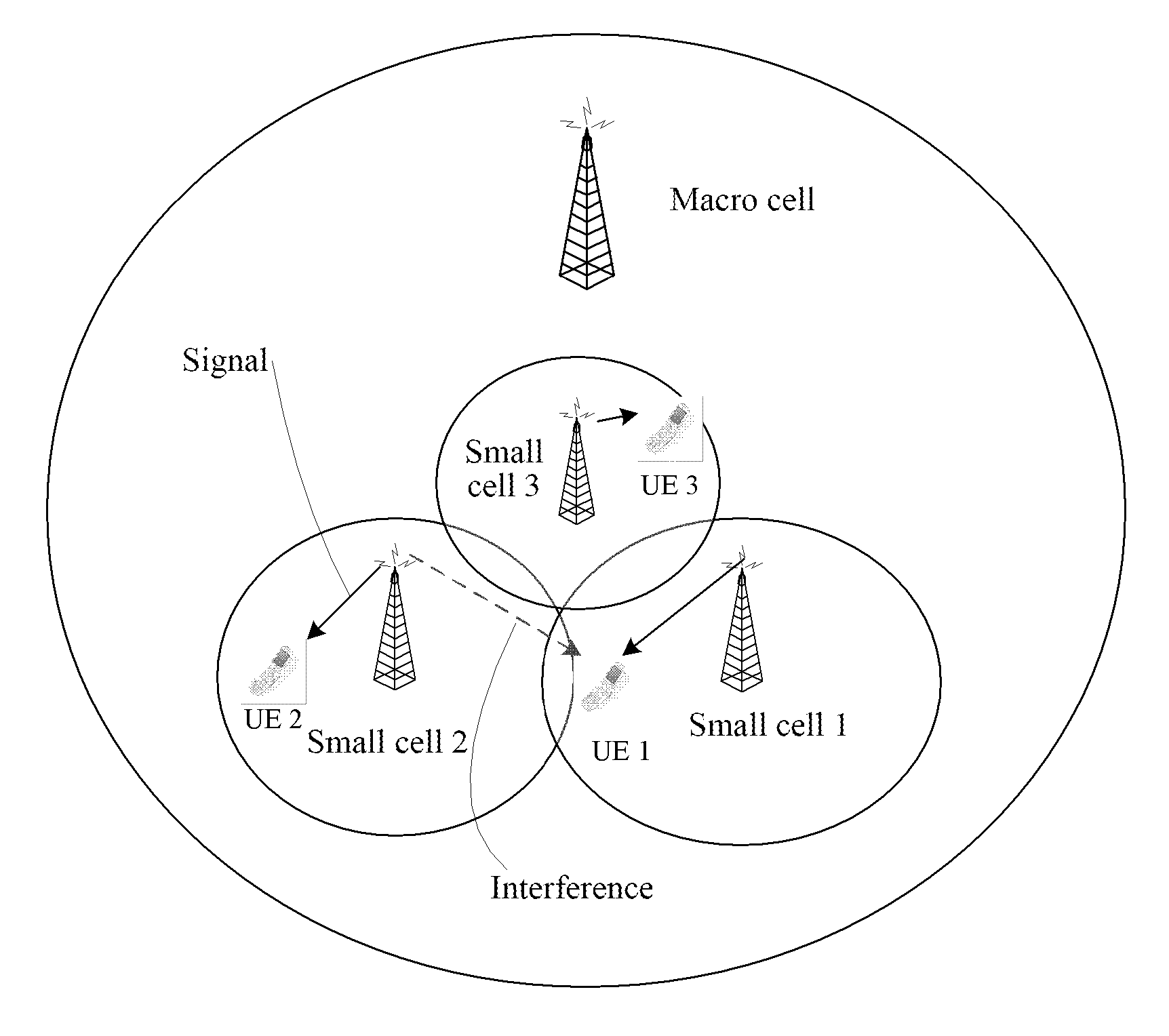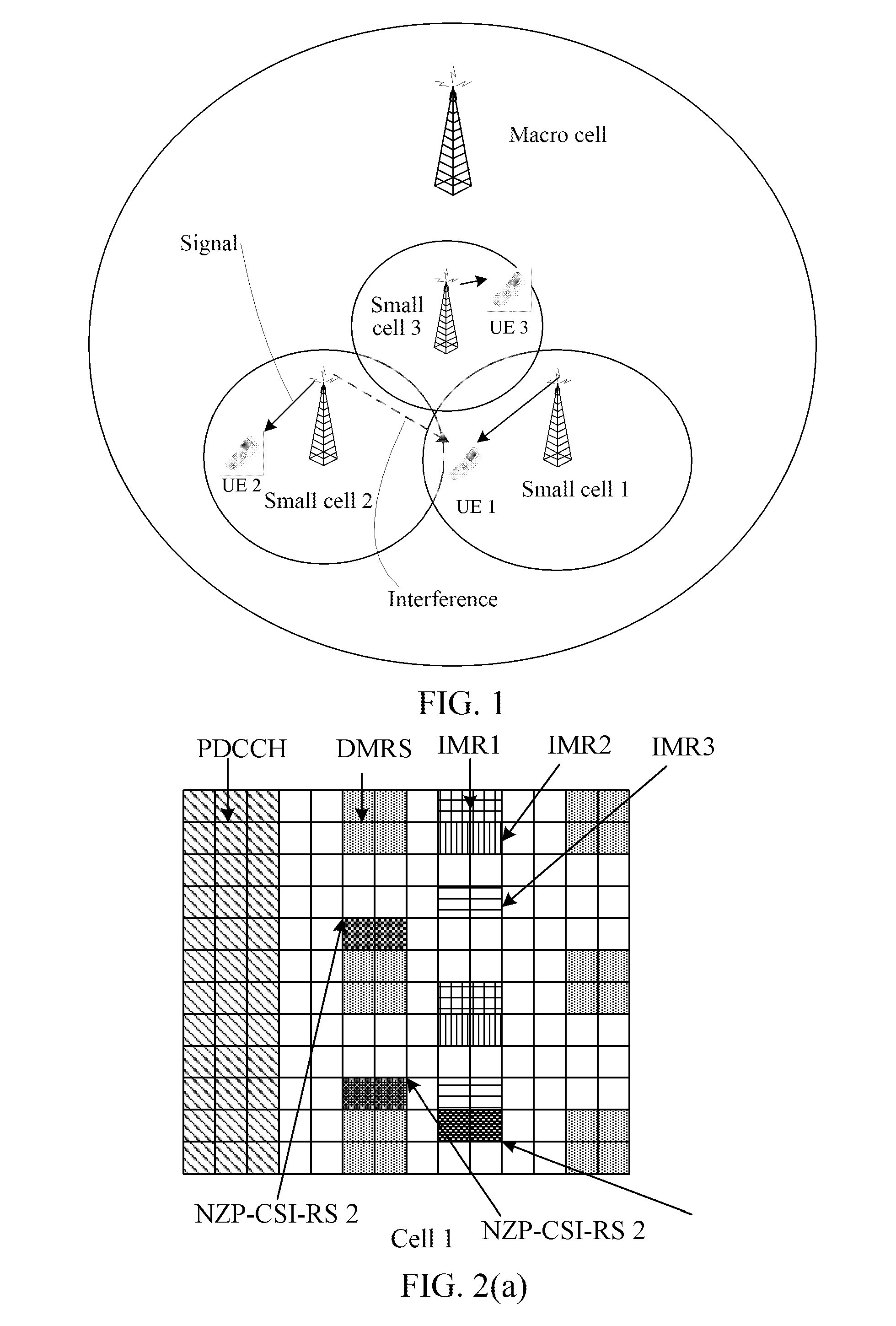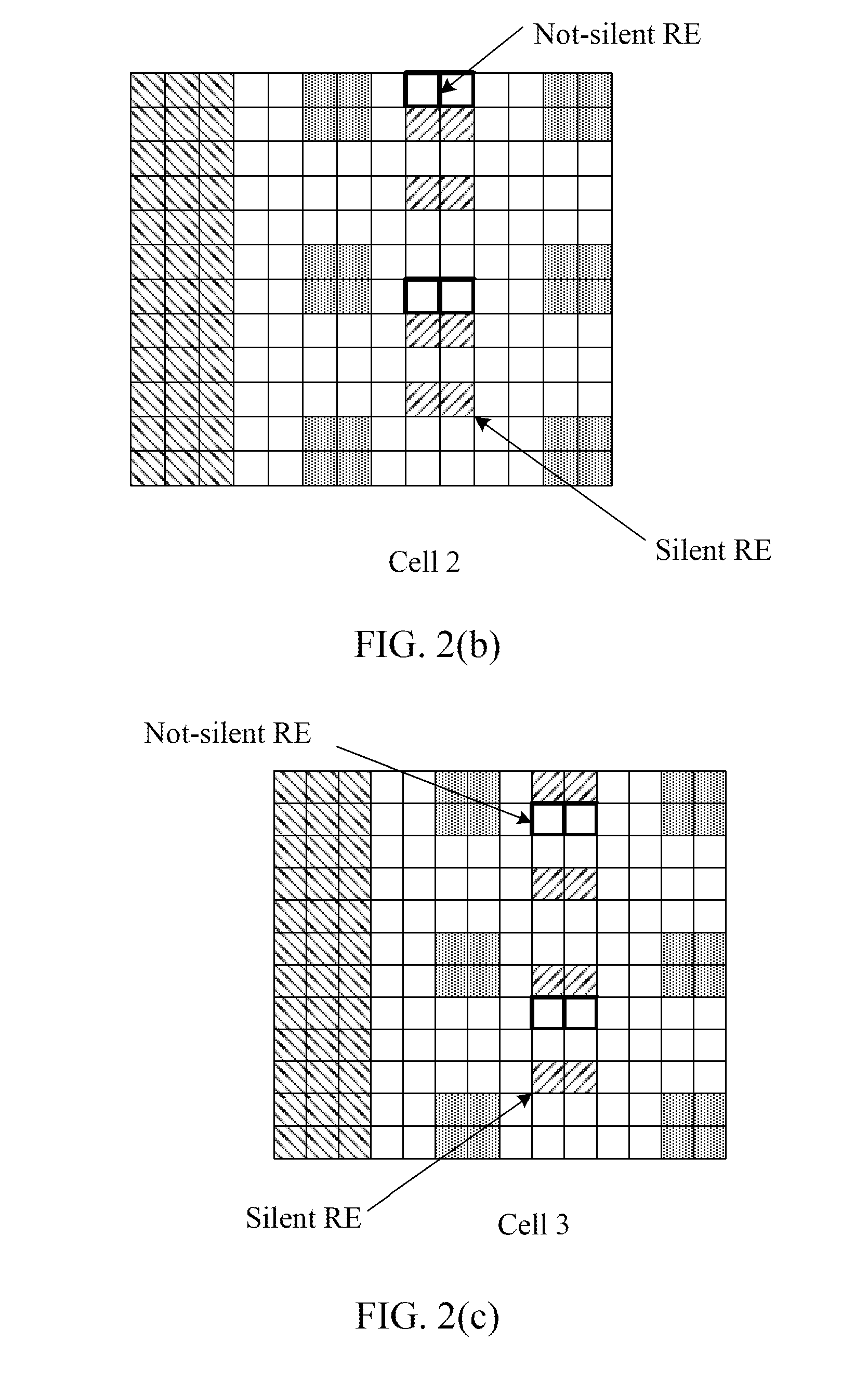Method and Node for Interference Measurement via inter-Cell Cooperation
a technology of inter-cell cooperation and interference measurement, applied in the field of communication, can solve problems such as resource configuration conflict, relatively severe interference between cells, and new problems, and achieve the effect of accurate resource scheduling
- Summary
- Abstract
- Description
- Claims
- Application Information
AI Technical Summary
Benefits of technology
Problems solved by technology
Method used
Image
Examples
first application example
The First Application Example
[0100]As shown in FIG. 1 and FIGS. 2 (a), 2 (b) and 2 (c), it is assumed that the macro cell and the small cell in FIG. 1 use different carriers, and the small cells 1, 2 and 3 form into one cell cluster, and the base stations to which respective small cells belongs are close to each other and form into one coordinated set. The small cell 1 uses the interference measurement resource to respectively perform interference measurements in the two cases of shutting down the small cell 2 and shutting down the small cell 3. As shown in FIG. 5, the small cell 1 respectively takes the corresponding interference measurement resource information (IMR information) from the small cell 2 and the small cell 3, and perform the interference measurement on the Confirmed interference measurements resource (confirmed IMR). Both the small cell 3 and the small cell 2 has one list of coordinated cells, and this list may be obtained via the inter-base-station measurement, or by...
second application example
The Second Application Example
[0106]Different from the first application example, before the base station to which the small cell 1 belongs needs to obtain contents of the small cell 2 and small cell 3, including the interference measurement resource being in use, resources configured as the ZP-CSI-RS, or the RE locations at which they are being measured by the other nodes, it respectively sends a request to the small cell 2 and the small cell 3, and then the small cell 2 and the small cell 3 send the small cell 1 contents including the respective interference measurement resources being in use, resources configured as the ZP-CSI-RS or RE locations at which they are being measured by the other nodes and so on. The other procedures are the same as the above-mentioned first application example and will not be repeated here.
third application example
The Third Application Example
[0107]Different from the first and second application examples, in the present application example, base station to which the small cell 1 belongs or the UE within its serving range obtains the interference measurement resource information by measuring the NZP-CSI-RS of the adjacent cells. The small cells 2 and 3 respectively notify the small cell 1 of the configuration information of NZP-CSI-RS 2 and NZP-CSI-RS 3 (as shown in FIG. 2 (a), 2 (b), 2 (c)) as well as their corresponding ratios Pc2 and Pc3 of PDSCH EPRE to NZP-CSI-RS power (take the small cell 2 as an example, the specific manner is shown in FIG. 6). Wherein, Pc2 and Pc3 are expected power ratios used by the cells 2 and 3. The frequency domain range indicated by each Pc is the corresponding bandwidth of the UE performing the CSI feedback of wideband.
[0108]Take the manner of the UE1 measuring and reporting the interference measurement resource information for example, the UE1 obtains the recei...
PUM
 Login to View More
Login to View More Abstract
Description
Claims
Application Information
 Login to View More
Login to View More - Generate Ideas
- Intellectual Property
- Life Sciences
- Materials
- Tech Scout
- Unparalleled Data Quality
- Higher Quality Content
- 60% Fewer Hallucinations
Browse by: Latest US Patents, China's latest patents, Technical Efficacy Thesaurus, Application Domain, Technology Topic, Popular Technical Reports.
© 2025 PatSnap. All rights reserved.Legal|Privacy policy|Modern Slavery Act Transparency Statement|Sitemap|About US| Contact US: help@patsnap.com



